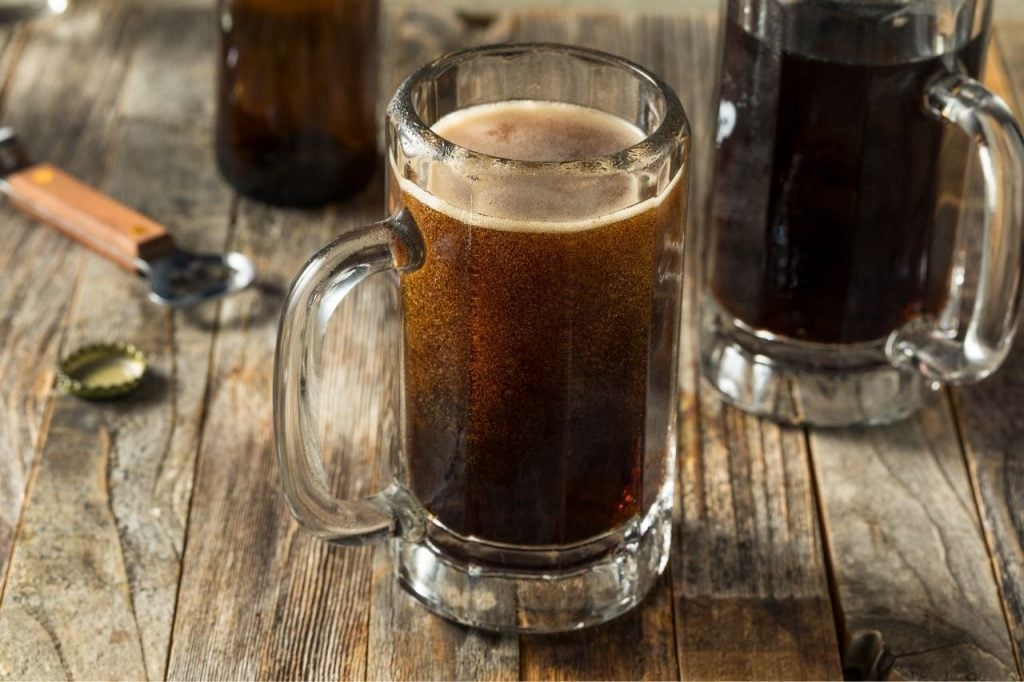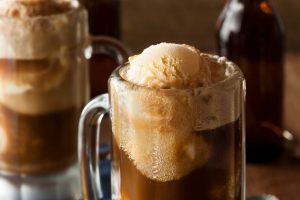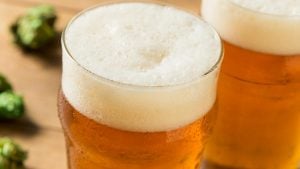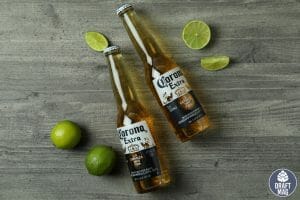Birch Beer vs Root Beer: Brewing the Difference Between the Two
The birch beer vs root beer debacle needs to be settled once and for all. Although the flavors of these two varieties of beer are very similar, there are some differences. These beers would make excellent additions to your beverage list. In specific ways, their manufacturing procedures are also comparable.

In this article, we’ll highlight the similarities and distinctions between birch beer and root beer.
What Is Birch Beer?
Birch beer, despite its name, isn’t a beer but simply a sugary, carbonated drink that originated in Pennsylvania. Commercial brands of Birch Beer started in the late 1800s after it was first manufactured at home by Americans.
The birch beer was brewed from sap tapped directly from the birch plant. But now, commercial productions employ replacements such as birch syrup, birch bark, and birch oil. They also use yeast to ferment the syrup and promote CO2 generation, which gives the drink its crisp texture.
A birch tree is native to North America, with various species and variants ranging from tiny shrubs to large trees. Birch tree bark may be stripped and utilized to extract essential oils. These are subsequently commonly used as flavoring.
Features of Birch Beer
Here are the main characteristics of birch beer:
– Alcoholic Content
Despite its name, birch beer is a non-alcoholic beverage. However, an alcoholic version is also available by fermenting the liquid with ale yeast. The carbohydrates in the beer will be broken down by yeast into ethanol (alcohol) and carbon dioxide, giving the drink a crisp texture.
– Ingredients
Birch bark is the main ingredient in Birch beer. After brewing, it is this bark extract that gives the beer its color. You can make birch beer by distilling birch oil from the sap of the sweet birch tree. It is also possible to make birch beer from the oil, twigs, and root of birch trees. As a result, the flavor is distinct and immediately identifiable.
– Flavor
Birch beer flavor is minty and wintergreen. The birch beer taste has earthy, sweet, and creamy undertones, although it might taste peppery depending on if your recipe includes spices like nutmeg, cinnamon, vanilla, or cloves. However, if you have a pollen allergy, you should avoid birch beer since it might trigger a response.
– Color
The color depends on the sap, essential oil, or bark taken from the tree. In general, the hue ranges from brown to red and even white. The red kind has a milder texture, and the carbonation isn’t as strong. White birch beer, on the other hand, is a clear version with a distinct wintergreen taste.
Preparation of Birch Beer
In this section, our experts describe the process of preparing birch beer.
– Create the Birch Beer Base
You can brew Birch beer using birch oil. You may extract the oil from the bark of the birch tree or with dried bark.
- If you use birch oil, don’t distill or treat it before adding it to water.
- If employing bark, dissolve the dried birch bark powder, flakes, or chunks in boiling water and cook until the beverage has the desired wintergreen taste.
- Allow the winter green-infused water to cool before using.
– Create a Syrup
A syrup, generally produced with brown or white sugar or other sweeteners, is required in addition to the birch bark. Brown sugar and molasses can provide color to your birch beer, providing it with a faint caramel hue. Vanilla bean, crushed ginger and star anise are also popular additions to birch beer.
- Heat the birch bark, water, and other ingredients in water for around 30 minutes, and wait for the extraction of the flavor.
- Remove all the particles and sediment from the water by straining them.
- Put sugar to make the foundation for the birch beer.
– Ferment the Syrup
The birch beer gets its carbonation from either carbonated liquid or fermentation. You can ferment birch beer by putting ale yeast into the base mixture.
- Allow the sugar mixture and birch bark to cool to eliminate any sediment before using yeast.
- You may add a tiny amount of yeast, about a one-eighth spoon per gallon of water, once the mixture reaches 75 degrees Fahrenheit.
- Allow the yeast to bloom for 15 minutes before shifting the liquid to sealed bottles.
- Immediately top the chilled birch beer foundation with carbonated water.
When preparing the birch beer foundation, use less water if you are utilizing carbonated water. Instead of a sweetened liquid, make a heavy syrup.
– Store or Consume
If you use carbonated water to make the birch beer, you can serve it after cooling. If you are using yeast, instead, allow the mix to remain in tiny, sealed containers for 36 hours before measuring the carbonation level.
Refrigerate for two days before consuming after it is ready. When prepared with yeast, birch beer may last for about a month. Keep the syrup in a firmly sealed container and combine with carbonated liquid as required for beer prepared from the syrup. The syrup will last four to five months in the fridge.
What Is Root Beer?

Root beer is also a carbonated soft drink. It is a traditional American beverage with a rich, herbal flavor. Brewers used to manufacture the beer by fermentation of herbal decoction, including sarsaparilla root, sassafras bark, and plants with yeast and sugar to produce a naturally bubbly, probiotic soft drink.
The entire plant of the sassafras tree, which belongs to the laurel family, contains volatile oils. However, nowadays, root beer does not include the ingredient due to various health issues with sassafras consumption.
If you want to brew root beer from home, stay away from any plants you aren’t sure about. Avoid using plants that have been treated with pesticides or contain safrole. Other herbal ingredients, such as wintergreen, cinnamon, and anise, may be present in your root beer. Most modern root beers come with artificial flavors and sweeteners. Some companies have even added caffeine to give their sodas a boost.
The root beer is available in a variety of tastes, depending on the other roots utilized. Since it contains a mixture of components, root beer is essentially tainted sarsaparilla. Both beverages are well-known and have a large following across the world.
Features of Root Beer
Here are the features of root beer:
– Alcoholic Content
Root beer produced the old-fashioned way has 2 percent alcohol, but some add extra to make it a strong alcoholic beverage. Root beers with a high alcohol by volume (ABV) have been popular in recent decades. Not Your Father’s Root Beer is a well-known brand that makes this drink in various ABVs ranging from 5 to 19.5 percent.
– Ingredients
The main ingredients are barks, roots and plants. Ginger, wintergreen, sarsaparilla, hops, juniper, licorice allspice, coriander, dandelion root, spikenard, and burdock root, were all common constituents.
Others include honey, vanilla, nutmeg and molasses, among others. The additional ingredients provide the right flavor, and the amounts may be adjusted to suit your tastes.
– Flavor
Root beer has a sweet flavor. However, you can also find a hint of acidity in commercial root beers from well-known brands, which adds some complexity to the overall taste.
Most businesses utilize vanilla extracts and other spices to enhance the flavor of the beer. The root beer taste and aroma can vary from one brand to the next.
– Color
Root Beer is brown. You can also find a blend of red and orange. Most brewers add a small quantity of black or chocolate malt to add color and taste.
Preparation of Root Beer
To avoid introducing potentially hazardous bacteria into the mix, sterilize the bottles before you begin. Transfer the bottles to the refrigerator once your homemade root beer has reached the proper level of fizz, where it will last for about a month.
- You need a few components to produce a basic DIY root beer: sarsaparilla root, sugar, sassafras root, yeast or whey, and water.
- Then combine it with two cups of water, one cup of sugar, and one cup of yeast in a container.
- Add a little vanilla essence or a vanilla bean to your root beer to get the delicate, creamy overtones.
The first step is to make the root beer syrup. Combine the sassafras, sarsaparilla, and a vanilla bean that has been split in half and scraped to liberate the seeds with water and sugar. Boil the mixture and reduce to low heat for about 10 minutes, then soak the spices for two hours.
Fill a sieve with the syrup and put it over a big basin or saucepan lined with cheesecloth. Allow it cool before combining a third of the syrup with two-thirds of the seltzer water to produce root beer soda. Don’t forget to top it up with some ice cream!
Root Beer vs Birch Beer
The debate between birch beer and root beer will rage on for years to come. So, which do you prefer out of the two? Why do you think you would choose it for the other?
Here is the difference between birch beer and root beer.
| Basis of Difference | Root beer | Birch beer |
| Flavor | The tastes of root beer and birch beer are similar since both include birch roots. Root beer with vanilla or cinnamon flavors is also available. | Birch bark is the primary ingredient in this beer. This beer is made from the oil, twigs, and root of birch trees. As a result, the flavor is distinct and immediately identifiable. |
|
Ingredients | It includes many roots, such as ginger, dandelion, anise, cloves, cinnamon, etc. Birch is sometimes used to add taste, due to which the taste might be comparable in some cases. Other oils and herbs are also added to the beer to give it a variety of flavors. | Birch oil, extracted from the sap of the black birch, is utilized. This beer is derived from the wild, and it does not contain any root extracts. |
| Availability | Root beer is available in the United States, the United Kingdom, Australia, and even certain Asian nations. | Pennsylvania, the southern boundary of its market, is the biggest producer and consumer of birch beer. |
| Uses | You can find it in various commercial items and cuisines, including candy, popcorn, and certain shampoos. | Birch syrup, wine, and other products include birch. Commercials use them in shampoos, soaps, cosmetics, and herbal beverages. |
|
Origin | The name is derived from the materials used in its production. However, outside of the Northern United States, it is known by other names. | It is made from birch twigs, sap and roots, and extracted birch oil. True birch will never be flavored with anything else, such as root beer. |
FAQ
What is Birch beer similar to?
Birch beer is similar in taste to root beer but with a distinctive minty, wintergreen flavor.
Root beer food pairings?
Root beer pairs well with spicy and savory foods like fried chicken, chili, and tacos. It can also be a great accompaniment to burgers, grilled meats, and barbecue.
Birch beer food pairings?
Birch beer pairs well with barbecue, burgers, and pizza. It also complements rich and savory foods such as smoked meats and grilled sausages. Additionally, its minty flavor makes it a refreshing drink to have with spicy foods.
Endnote

Although birch and root beer have similar tastes and histories, they also have significant variances. The principal component is notable since birch is used for one and a mix of roots and plants is used for the other. Birch beer is non-alcoholic, whereas root beer usually contains some alcohol. You can find them in drinks, sweets, and cuisine. They are both highly ranked, regardless of which one you choose.






